Inverter Installation
Part 1: Planning & Purchase
--Blogpost written by Bob
An inverter is used to convert 12 volts DC from our battery bank to 110 volts AC (household current)--this would be used when we need 110-volts AC while we are at anchor or underway. Since we started considering the installation of an inverter, we have added 12-volt powered USB ports for charging various devices (like iPhones and iPads) and purchased a 12-volt charger for our laptops--all so we don't have to use an inverter for small loads.
Anticipated Needs for the Inverter
Our anticipated needs for an inverter are minimal:
(1) charging batteries for a portable drill
(2) running a small portable printer
(3) charging camera batteries
(4) charging battery in electric shaver
(5) sewing machine (1.5 amps)
(6) Dremel tool (1.2 amps)
(7) soldering gun (140 watts)
(8) small vacuum cleaner (5 amps)
We have decided that if we have to use tools or equipment that require more power than our selected inverter can provide, we will simply pull into a marina and use shore power. (Shore power involves a heavy-duty yellow cable that connects the boat to a 110-volt AC source on the dock--this allows all the onboard electrical receptacles to be used like a land-based home.) Of course, this would involve the added expense of a night in a marina ($38 to $95, depending on location and quality) but occasionally a night in a marina will be a welcomed luxury.
Inverter Sizes
Two of the above needs involve variable-speed electric motors--therefore, we need a pure sine wave inverter. In medium size inverters, the three basic sizes that are of interest to us are shown in the following table:
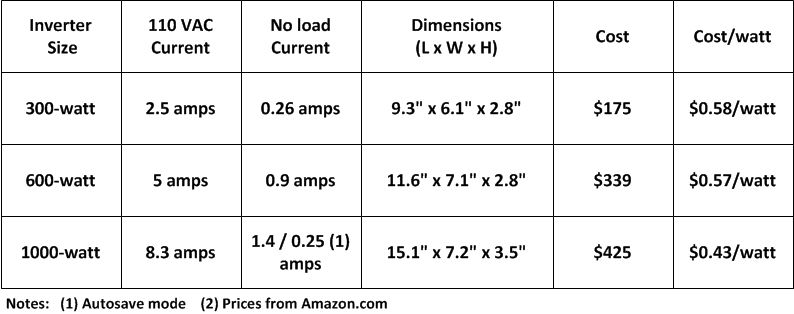 |
| This table is a comparison of three Go Power pure sine wave inverters under consideration. They are offered by Amazon. |
We don't expect to have the inverter switched on when not in use--therefore, the no load current (load on the battery bank when not in use) has very little to do with our decision.
Location for the Inverter
Since the inverter needs can be served from one location (2 electrical sockets), we decided to locate the inverter in the navigation station area. The physical size is important since it has to fit in an area below the navigation station desk and not interfere with getting our legs under the desk.
Inverter Size Selection
With consideration of our expected inverter needs, customer feedback on Amazon, and cost, we decided to buy the 600-watt pure sine wave inverter.
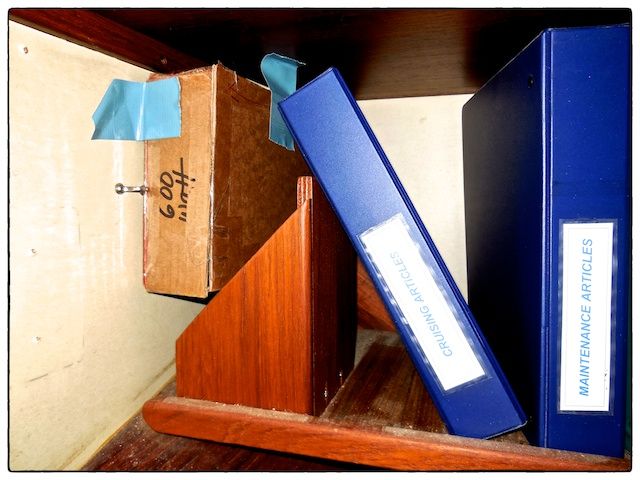 |
| A cardboard model of the 600-watt inverter in the location. |
Summary
The actual installation of the 600-watt inverter will be covered in Part 2, expected to take place in January or February 2015 along with the installation of the auxiliary fuel tank. So far, we've had a mild winter and I've been able to keep the boat's interior nice and warm with an oil-filled radiator. I hope it stays this way for the remainder of the winter!
Thanks for following our blog!
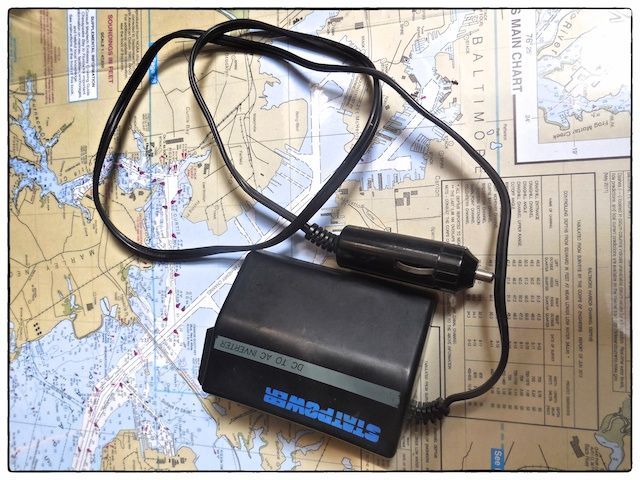
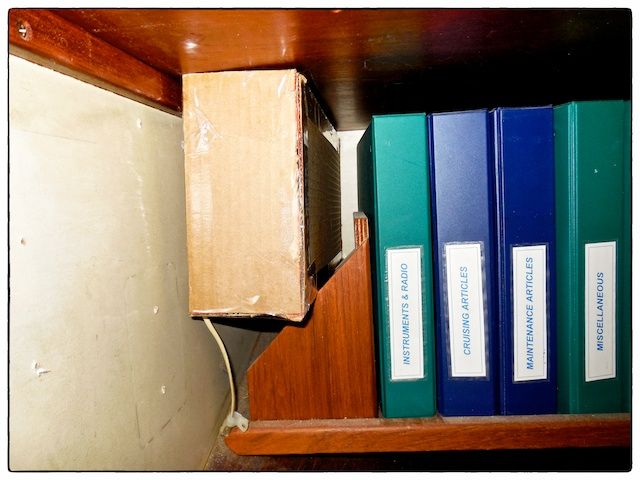
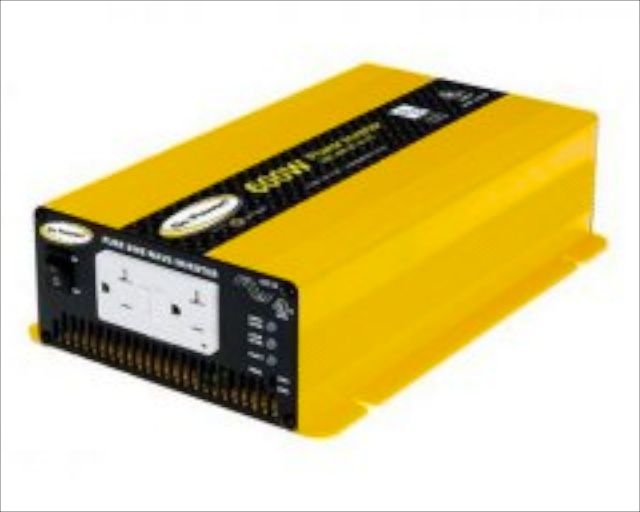
No comments:
Post a Comment